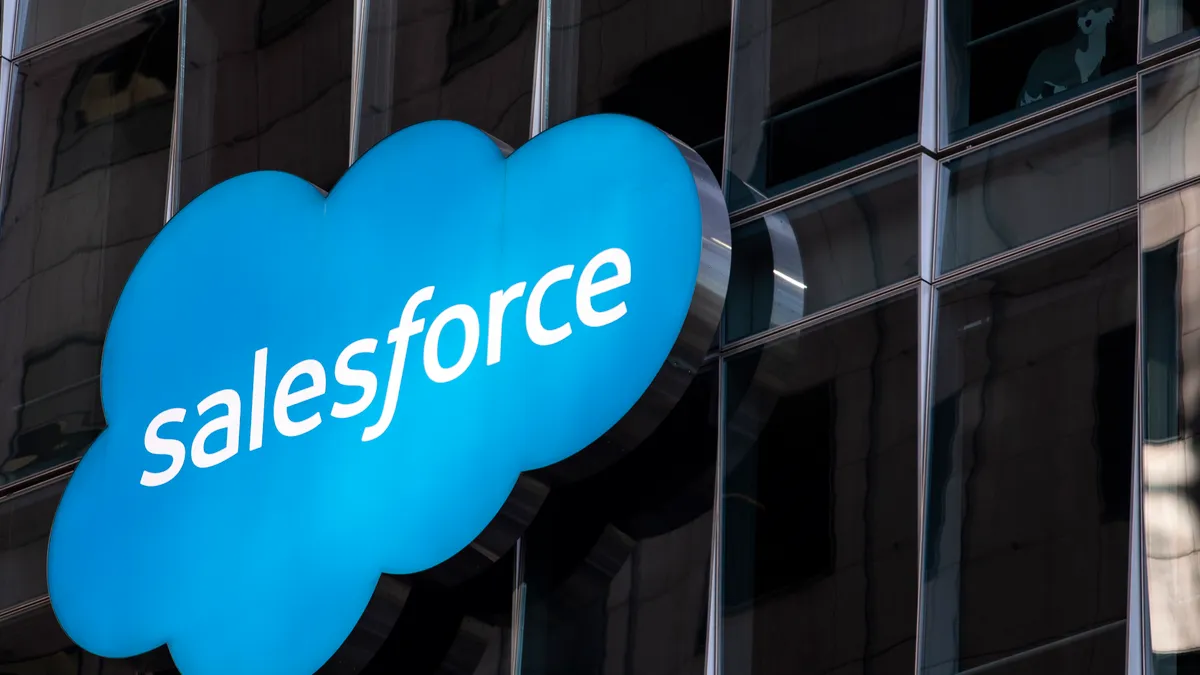Dive Brief:
- After layoffs and executive departures at Salesforce, its latest earnings call showed signs of stability. The enterprise software vendor hit its lowest-ever level of customer revenue attrition, CEO Marc Benioff said during the company’s Q4 2023 earnings call this week.
- “As customers are looking to consolidate platforms and reduce complexity, we're seeing many multicloud expansions, a key growth strategy for us,” COO and President Brian Millham said during the call, according to a SeekingAlpha transcript.
- The company continued to experience longer sales cycles, additional deal approval layers and deal compression. For the full year, the company’s revenue was up 18% year-over-year, totaling $31.4 billion.
Dive Insight:
Salesforce has “hit the hyperspace button” with a new transformation plan guiding decision-making, Benioff said.
The transformation plan focuses on four areas: restructuring, improving profitability and productivity, prioritizing core innovations and a deeper relationship with shareholders.
Part of this plan included a reduction in workforce and real estate.
“On a call like this, it's easy to talk about that very clinically as if the headcount just represents dollars and not real human beings — we all fully realize that there are employees whose lives and careers and families were deeply impacted by these decisions,” CFO and President Amy Weaver said during the earnings call.
The company’s M&A committee was also disbanded and a business transformation committee was formed by the board to “ensure a high degree of accountability,” Benioff said.
Salesforce sales representatives have experienced changes too. Members of the sales, success and service teams are now required to be in front of customers for a minimum of four days a week.
“During the pandemic, we saw productivity drop among our account executives who were working exclusively from home,” Millham said during the earnings call.
Sales reps have been trained in the “language of the customer,” in addition to setting a faster pace for onboarding reps. Another layer to the strategy is to push bundles to customers looking to consolidate platforms and applications.
“I also mentioned an opportunity we have to bring our products together around a buyer; how do we put some bundles together to drive higher [average selling prices] for all of our sellers and solve more problems for our customers with a single selling motion,” Benioff said.
Software application overload drives increased complexity within IT organizations. The average large business uses 367 software apps and systems to get work done, according to Forrester Consulting data commissioned by Airtable.












